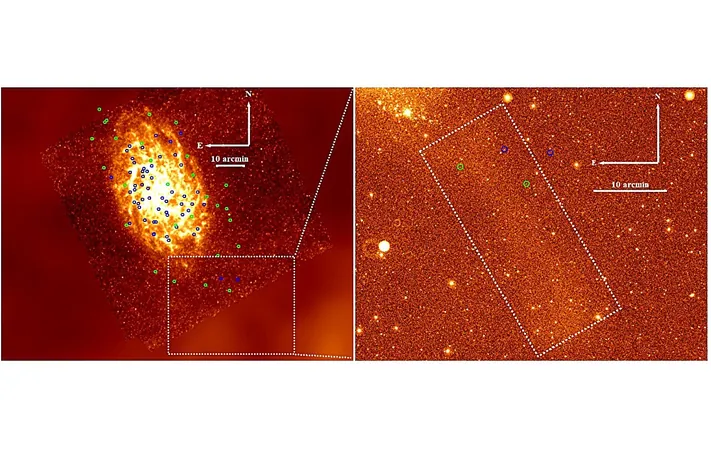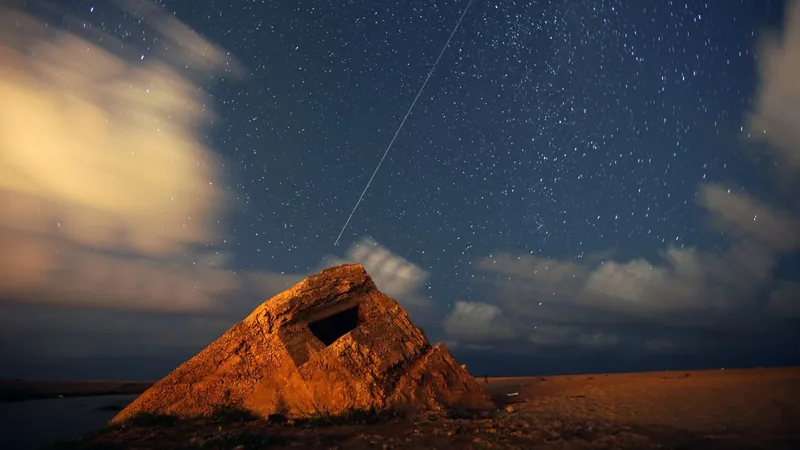
Groundbreaking Discovery! Nearly 300 Possible Supergiant Stars Unveiled in Our Cosmic Neighbors!
2024-11-04
Author: Noah
Introduction
In an astonishing advancement for stellar astronomy, researchers utilizing the Large Sky Area Multi-Object Fiber Spectroscopic Telescope (LAMOST) have identified close to 300 potential supergiant stars in the Andromeda and Triangulum galaxies. This remarkable discovery was unveiled in a research paper published on October 25th on the pre-print server arXiv.
Significance of Supergiant Stars
Supergiant stars, which are significantly larger and more luminous than average stars, play a vital role in deepening our understanding of stellar evolution. However, observing these cosmic giants poses challenges due to their vast distances, their propensity to form in binary or multiple systems, and their association with dense clouds of interstellar matter that obscure visibility.
Research Context and Methodology
Research into supergiants within the Local Group of galaxies—our cosmic neighborhood—holds the key to unlocking critical insights that could refine theoretical models of star formation and evolution. Despite previous efforts and achievements in cataloging supergiant stars, a comprehensive census remains elusive.
The Study Team and Focus
Leading this groundbreaking initiative is Hao Wu and his team from Peking University in Beijing. They have meticulously reported the results of their systematic search for supergiant stars in two key galaxies: Messier 31 (Andromeda galaxy) and Messier 33 (Triangulum galaxy).
Key Findings
The team's analysis, derived from LAMOST's latest data release (DR10), brought forth a staggering count of 199 supergiant candidates in Andromeda and 84 in Triangulum. Impressively, about 84% of the identified supergiant candidates in Andromeda have met two rigorous selection criteria, affirming their classification as legitimate supergiants. Meanwhile, around 67% of the candidates in Triangulum have passed these criteria.
Diversity of Stellar Types
Diving into their findings, the sample collected from the Andromeda galaxy includes 134 yellow supergiants (YSGs), 62 blue supergiants (BSGs), and three red supergiants (RSGs). In contrast, the Triangulum galaxy showcased 53 YSGs, 28 BSGs, and again three RSGs. This highlights a diverse array of stellar types within these celestial expanses.
Notable Discoveries
Remarkably, the most massive supergiant found among these candidates hails from Andromeda, identified as LAMOST J0043+4124, with an estimated mass exceeding 40 times that of the Sun! This discovery not only showcases the impressive scale of supergiant stars but also raises intriguing questions about the conditions that allow such massive stars to exist.
Implications and Future Exploration
The authors of the study placed significant emphasis on the implications of their findings, stating, “So far, this is one of the largest supergiant samples studied among M31 and M33 with comprehensive optical wavelength coverage. This sample is invaluable for understanding star formation and stellar evolution in varying environments.”
Conclusion
The findings set the stage for future exploration and could potentially reshape our understanding of stellar life cycles. Scientists are chomping at the bit to delve deeper into these cosmic wonders, promising to unlock even more secrets about our universe. Stay tuned as we watch this stellar saga unfold!









 Brasil (PT)
Brasil (PT)
 Canada (EN)
Canada (EN)
 Chile (ES)
Chile (ES)
 España (ES)
España (ES)
 France (FR)
France (FR)
 Hong Kong (EN)
Hong Kong (EN)
 Italia (IT)
Italia (IT)
 日本 (JA)
日本 (JA)
 Magyarország (HU)
Magyarország (HU)
 Norge (NO)
Norge (NO)
 Polska (PL)
Polska (PL)
 Schweiz (DE)
Schweiz (DE)
 Singapore (EN)
Singapore (EN)
 Sverige (SV)
Sverige (SV)
 Suomi (FI)
Suomi (FI)
 Türkiye (TR)
Türkiye (TR)